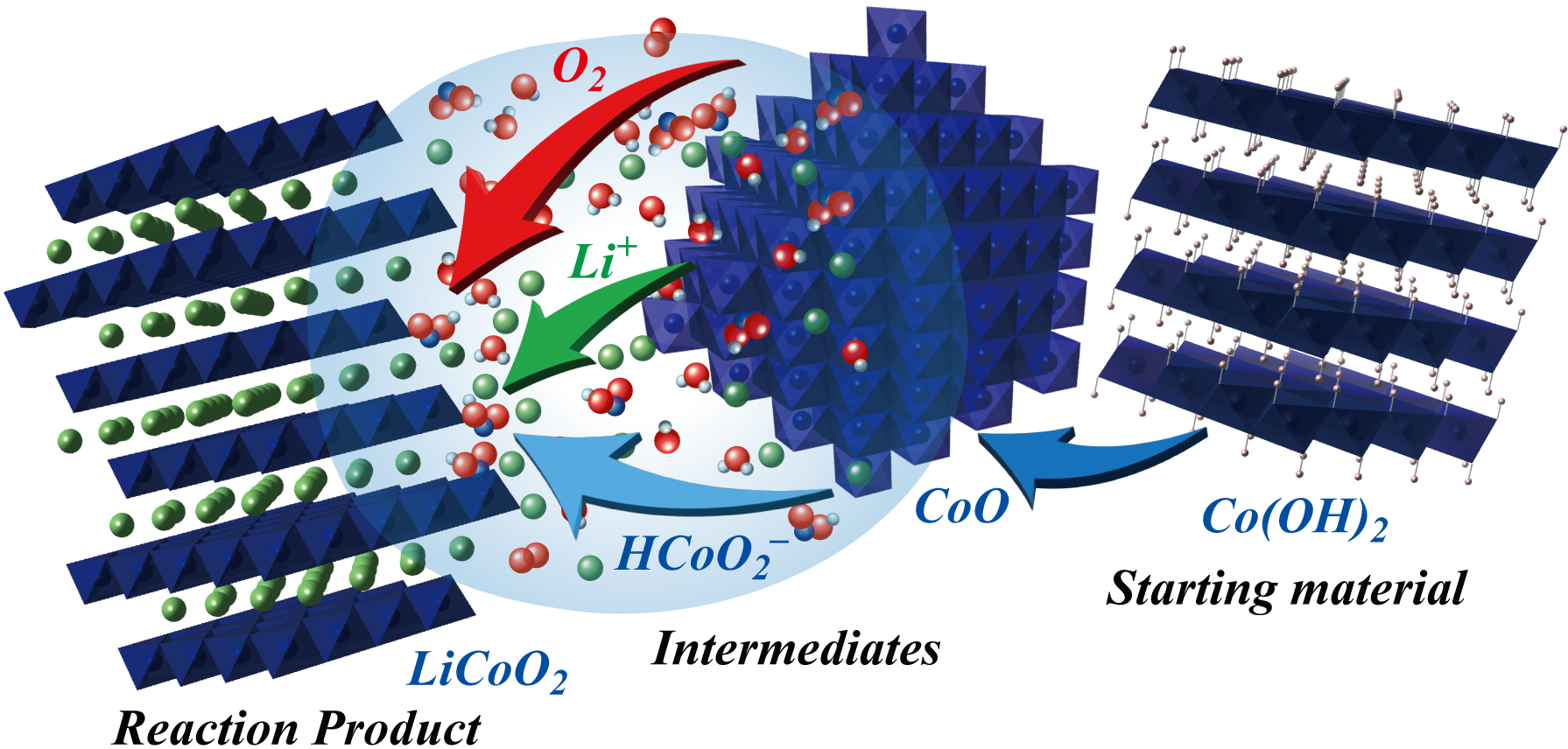Layered lithium cobalt oxide, a vital element in lithium-ion batteries, has been successfully synthesized at temperatures as low as 300 °C and within a mere 30-minute timeframe.
 Reaction pathway of the hydro flux process to form layered lithium cobalt oxide (LiCoO2) at 300 °C. Image Credit: Masaki Matsui.
Reaction pathway of the hydro flux process to form layered lithium cobalt oxide (LiCoO2) at 300 °C. Image Credit: Masaki Matsui.
In the case of consumer electronics and electric vehicles Lithium-ion batteries (LIB) are usually used. The compound for the cathode of handheld electronics in LIB is Lithium cobalt oxide (LiCoO2). The fusion of this compound requires a temperature of over 800 °C and takes 10 to 20 hours to complete.
A new method to synthesize lithium cobalt oxide at a temperature below 300 °C within 30 minutes is developed by a team of researchers at Hokkaido University and Kobe University, led by Professor Masaki Matsui at Hokkaido University’s Faculty of Science. Their findings were published in the journal Inorganic Chemistry.
Lithium cobalt oxide can typically be synthesized in two forms. One form is layered rocksalt structure, called the high-temperature phase, and the other form is spinel-framework structure, called the low-temperature phase. The layered LiCoO2 is used in Li-ion batteries.
Masaki Matsui, Professor, Department of Chemistry, Faculty of Science, Hokkaido University
By utilizing cobalt hydroxide and lithium hydroxide as initial components and introducing sodium or potassium hydroxide as an additive, the research team conducted a set of meticulous experiments under diverse conditions to create layered LiCoO2 crystals.
This procedure was coined the “hydroflux process,” and it enabled them to elucidate the reaction pathway responsible for generating these layered crystals.
By understanding the reaction pathway, we were able to identify the factors that promoted the crystal growth of layered LiCoO2.
Masaki Matsui, Professor, Department of Chemistry, Faculty of Science, Hokkaido University
Masaki Matsui adds, “Specifically, the presence of water molecules in the starting materials significantly improved crystallinity of the end product.”
The electrochemical properties of the layered LiCoO2 reveal that they are slightly inferior to commercially available LiCoO2 synthesized by the traditional high temperature method.
This work is the first experimental demonstration of the thermochemical stability of layered LiCoO2 at low temperatures under ambient pressure.
Masaki Matsui, Professor, Department of Chemistry, Faculty of Science, Hokkaido University
He also adds, “Our development of this hydro flux process will enable energy saving measures in various ceramic production processes. Our immediate next steps will be the improvement of the hydro flux process based on our understanding of the reaction pathway.”
Journal Reference:
Maeda, R., et al. (2023). Kinetically Enhanced Reaction Pathway to Form Highly Crystalline Layered LiCoO2 at Low Temperatures Below 300 °C. Inorganic Chemistry. doi.org/10.1021/acs.inorgchem.3c01704.